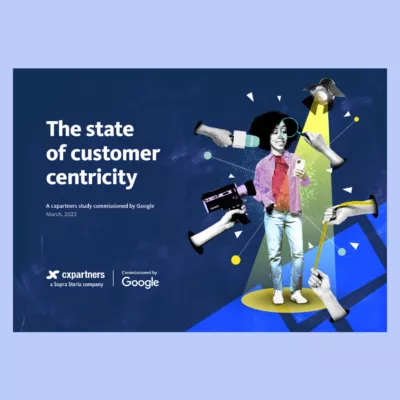Customer centricity
Commissioned by Google

The Customer Centricity Model is perfect for providing personalised advice on delivering better experiences for customers.
It gives a thorough assessment of capability, yet it is simple enough that leaders can quickly see where they need to focus.

